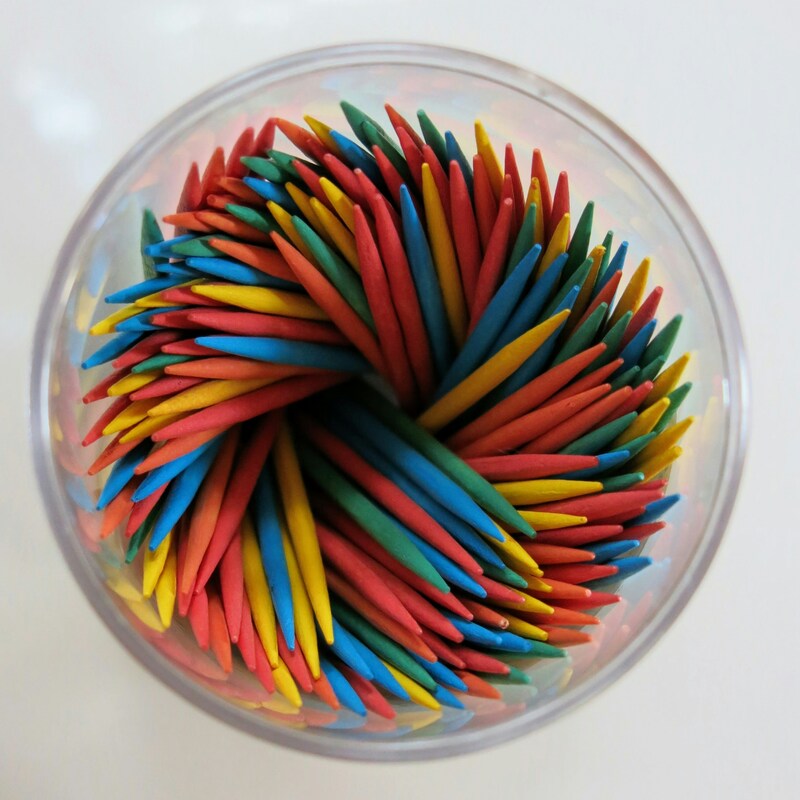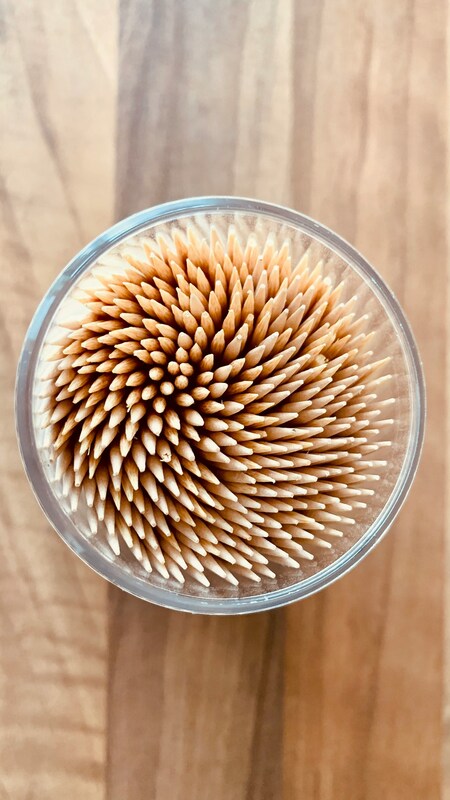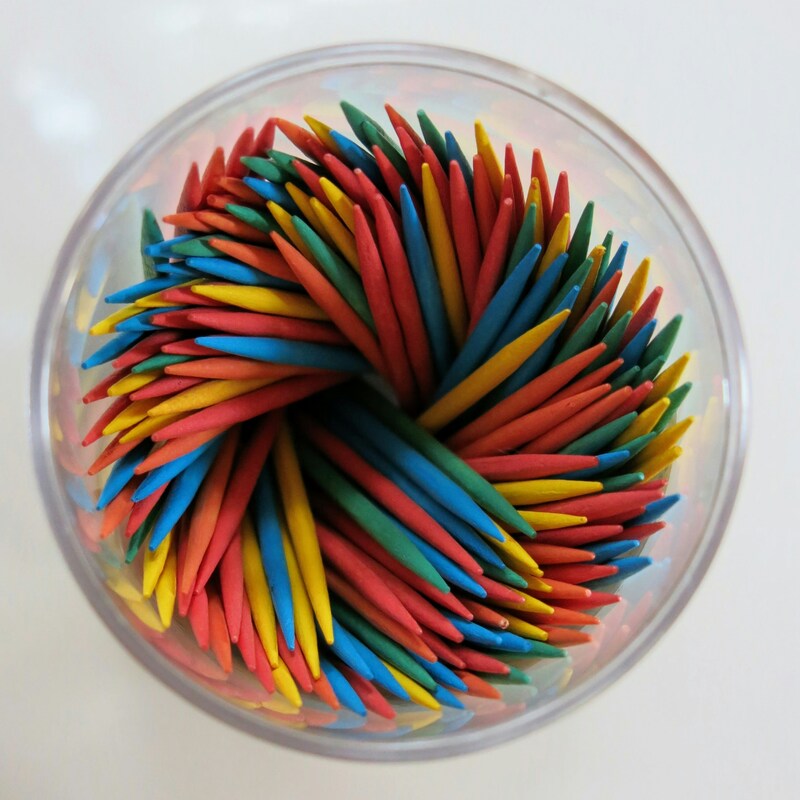A toothpick is a small, slender stick used for removing food particles from between teeth, cleaning teeth after meals, or sometimes for decorative or functional purposes in food preparation. They are typically made from wood or plastic, although other materials like bamboo, metal, or even bone have also been used.
|
1. 🪵 TYPES OF TOOTHPICKSA. By Material1. Wooden Toothpicks
|
🏭 MANUFACTURING PROCESSWooden Toothpicks:
4. 🧼 HYGIENE & SAFETY
|

🍢 CULINARY & OTHER USESIn Food:
🌱 SUSTAINABILITY & ENVIRONMENTAL IMPACT
Wooden Toothpicks
- Appetizers: Mini skewers for cheese, olives, or meatballs.
- Cocktail garnishes: Holding olives, cherries, etc.
- Cooking Aid: Holding stuffed meats or sandwiches together.
- Testing doneness: Used in baking to check if a cake is baked through.
- Crafts: Miniature models, glue applicators, or sculpture.
- Science experiments.
- First aid: As a makeshift splint.
- Electronics: Cleaning small crevices safely.
🌱 SUSTAINABILITY & ENVIRONMENTAL IMPACT
Wooden Toothpicks
- Biodegradable and renewable.
- Still contributes to deforestation if not managed sustainably.
- Non-biodegradable.
- Contribute to microplastic pollution if discarded improperly.
- Some are recyclable, but not always accepted in curbside bins.
- Grows faster than wood.
- Strong, durable, and compostable.
- Often preferred for sustainability.
🔄 ALTERNATIVES TO TOOTHPICKS
🧳 STORAGE & PORTABILITY
🧠 INTERESTING FACTS
- Dental Floss: Safer and more effective for cleaning between teeth.
- Interdental Brushes: For people with braces or larger gaps.
- Soft Picks: Flexible silicone brushes.
- Chewing sticks (Miswak): Used in some cultures for oral hygiene.
- Toothpick Picks with Floss: Combination tools (often plastic).
🧳 STORAGE & PORTABILITY
- Containers: Cylindrical jars, flip-top boxes, or individually wrapped.
- On-the-go options: Keychain containers, travel kits.
🧠 INTERESTING FACTS
- The Guinness World Record for the largest toothpick sculpture is over 100,000 toothpicks.
- In some cultures, offering a toothpick after a meal is a sign of hospitality.
- Leonardo da Vinci reportedly designed a toothpick-cleaning machine.



